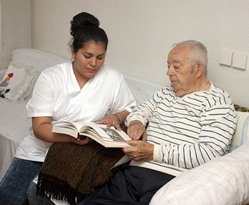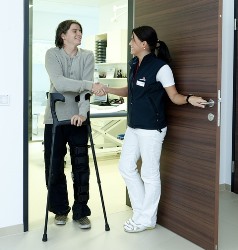How to Enroll In an Accredited RN Program near Spring Green Wisconsin
 Selecting the right nursing program near Spring Green WI may feel like a complex project, particularly if you have no idea what to search for in a good degree program. As you may already understand, to practice as a registered nurse, you need to acquire the proper education and training to become licensed. So it is vitally important that you study and evaluate the qualifications of each college you are thinking about before enrolling in your final selection. Unfortunately, too many potential students base their selection exclusively on the price of tuition and the proximity of the school. Selecting the least costly school or the one that is local to your residence is most likely not the most reliable way to choose a nursing program. There are various important additional things to investigate before you determine where to enroll in classes. But before we delve into that checklist, let’s first discuss the nursing degree alternatives that are offered as well as what the roles of nurses are in our medical system.
Selecting the right nursing program near Spring Green WI may feel like a complex project, particularly if you have no idea what to search for in a good degree program. As you may already understand, to practice as a registered nurse, you need to acquire the proper education and training to become licensed. So it is vitally important that you study and evaluate the qualifications of each college you are thinking about before enrolling in your final selection. Unfortunately, too many potential students base their selection exclusively on the price of tuition and the proximity of the school. Selecting the least costly school or the one that is local to your residence is most likely not the most reliable way to choose a nursing program. There are various important additional things to investigate before you determine where to enroll in classes. But before we delve into that checklist, let’s first discuss the nursing degree alternatives that are offered as well as what the roles of nurses are in our medical system.
Request Free Information on Nursing Schools Below
Nursing Degrees
There is more than one degree option to choose from to become a nurse. And to become a Registered Nurse (RN), a student must enroll in an accredited school and program. A nursing student can receive a qualifying degree in as little as 2 years, or continue on to attain a graduate degree for a total of 6 years. Following are some short explanations of the nursing degrees that are offered to aspiring students in the Spring Green WI area.
- Associates Degree. The Associate Degree in Nursing (ADN) is generally a 2 year program made available by community colleges. It prepares graduates for an entry level position in nursing in medical facilities including hospitals, clinics or nursing homes. Many utilize the ADN as an entry into nursing and subsequently obtain a higher degree.
- Bachelor’s Degree. The Bachelor of Science in Nursing (BSN) supplies more expansive training than the ADN. It is typically a four year program offered at colleges and universities. Licensed RNs may be eligible to complete an accelerated program based on their prior training or degree and professional experience (RN to BSN). Those applying to the program might want to advance to a clinical or administrative position, or be more competitive in the employment market.
- Master’s Degree. The Master of Science in Nursing (MSN) is typically a two year program after receiving the BSN. The MSN program offers specialization training, for example to become a nurse practitioner or concentrate on administration, management or teaching.
After a graduating student has earned one of the above degrees, he or she must pass the National Council Licensure Examination for Registered Nurses (NCLEX-RN) in order to become licensed. Additional requirements for licensing can vary from state to state, so make sure to contact the Wisconsin board of nursing for any state requirements.
Click Here to Get Free Information on Nursing Schools Near You!
Why Choose the Nursing Profession?
 Nurses are an integral component of a Spring Green WI medical team, and for many patients, their primary care providers. A nursing career opens doors to many opportunities, such as healthcare education, research and specialty areas of practice. Nurses go into the profession for various reasons, among the most meaningful are its practical and personal rewards. Nurses provide personal, one-on-one care to patients. Many patients in a hospital or home care environment spend more time with nurses than with physicians. Nurses often go into the profession due to a desire to tend to the needs of patients, including in instances of short-term treatment of illness and long-term care of chronic ailments. This human side of the health profession, as opposed to the analytical or research related aspects, is attractive to many who elect to pursue a nursing career. Nurses have extensive applicable skills and can choose from a number of work environments, such as nursing homes, doctor’s offices, medical clinics, community centers and hospitals. Also, nurses can progress into a variety of specializations, including addictions, critical care, genetics and neonatology. Although many nurses deliver personal patient care, others opt to be educators, policy consultants or pharmaceutical representatives.
Nurses are an integral component of a Spring Green WI medical team, and for many patients, their primary care providers. A nursing career opens doors to many opportunities, such as healthcare education, research and specialty areas of practice. Nurses go into the profession for various reasons, among the most meaningful are its practical and personal rewards. Nurses provide personal, one-on-one care to patients. Many patients in a hospital or home care environment spend more time with nurses than with physicians. Nurses often go into the profession due to a desire to tend to the needs of patients, including in instances of short-term treatment of illness and long-term care of chronic ailments. This human side of the health profession, as opposed to the analytical or research related aspects, is attractive to many who elect to pursue a nursing career. Nurses have extensive applicable skills and can choose from a number of work environments, such as nursing homes, doctor’s offices, medical clinics, community centers and hospitals. Also, nurses can progress into a variety of specializations, including addictions, critical care, genetics and neonatology. Although many nurses deliver personal patient care, others opt to be educators, policy consultants or pharmaceutical representatives.
Registered Nurse Job Activities
 Registered nurses are the most extensive occupation in the healthcare delivery system. RNs practice in numerous different medical settings, such as Spring Green WI hospitals, private practices, outpatient clinics, nursing homes and even schools. Their primary role is to help doctors in the care of their patients. Having said that, the particular duties of a registered nurse will depend on their job or area of expertise in addition to where they work. A portion of the responsibilities of an RN may include:
Registered nurses are the most extensive occupation in the healthcare delivery system. RNs practice in numerous different medical settings, such as Spring Green WI hospitals, private practices, outpatient clinics, nursing homes and even schools. Their primary role is to help doctors in the care of their patients. Having said that, the particular duties of a registered nurse will depend on their job or area of expertise in addition to where they work. A portion of the responsibilities of an RN may include:
- Administering medications
- Overseeing patients
- Performing physical examinations
- Managing care
- Supervising LPNs, LVNs and nurse aides
- Educating patients and their families
- Keeping health records and charts
Nurses with a more advanced degree may have more complex job duties and accountabilities. Nurse practitioners (NP), for example, must hold a Master’s Degree and generally work more independently than their RN counterparts. They can provide primary or specialty care services, prescribe medications, and diagnose and treat routine illnesses or injuries.
Nursing Online Programs
 Enrolling in nursing schools online is growing into a more in demand way to receive instruction and acquire a nursing degree. Some schools will require attending on campus for a component of the training, and nearly all programs require a specific amount of clinical rotation hours completed in a local healthcare facility. But since the remainder of the training can be accessed online, this method may be a more practical answer to finding the time to attend school for many Spring Green WI students. Regarding tuition, a number of online degree programs are less expensive than other on campus alternatives. Even other expenses such as for commuting and study materials may be reduced, helping to make education more easily affordable. And many online programs are accredited by organizations such as the Commission on Collegiate Nursing Education (CCNE) for BSN and MSN degrees. And so if your work and household responsibilities have left you with very little time to pursue your academic goals, perhaps an online nursing training program will make it more convenient to fit a degree into your hectic schedule.
Enrolling in nursing schools online is growing into a more in demand way to receive instruction and acquire a nursing degree. Some schools will require attending on campus for a component of the training, and nearly all programs require a specific amount of clinical rotation hours completed in a local healthcare facility. But since the remainder of the training can be accessed online, this method may be a more practical answer to finding the time to attend school for many Spring Green WI students. Regarding tuition, a number of online degree programs are less expensive than other on campus alternatives. Even other expenses such as for commuting and study materials may be reduced, helping to make education more easily affordable. And many online programs are accredited by organizations such as the Commission on Collegiate Nursing Education (CCNE) for BSN and MSN degrees. And so if your work and household responsibilities have left you with very little time to pursue your academic goals, perhaps an online nursing training program will make it more convenient to fit a degree into your hectic schedule.
Questions to Ask Nursing Colleges
 Now that you have decided on which nursing program to enroll in, as well as whether to attend your classes on campus near Spring Green WI or on the internet, you can utilize the following guidelines to begin narrowing down your options. As you no doubt are aware, there are many nursing schools and colleges throughout Wisconsin and the United States. So it is necessary to lower the number of schools to select from in order that you will have a manageable list. As we previously mentioned, the location of the school along with the price of tuition are most likely going to be the primary two points that you will look at. But as we also stressed, they should not be your only qualifiers. So prior to making your final choice, use the following questions to see how your selection compares to the other programs.
Now that you have decided on which nursing program to enroll in, as well as whether to attend your classes on campus near Spring Green WI or on the internet, you can utilize the following guidelines to begin narrowing down your options. As you no doubt are aware, there are many nursing schools and colleges throughout Wisconsin and the United States. So it is necessary to lower the number of schools to select from in order that you will have a manageable list. As we previously mentioned, the location of the school along with the price of tuition are most likely going to be the primary two points that you will look at. But as we also stressed, they should not be your only qualifiers. So prior to making your final choice, use the following questions to see how your selection compares to the other programs.
- Accreditation. It’s a good idea to make sure that the degree or certificate program as well as the school is accredited by a U.S. Department of Education acknowledged accrediting organization. Besides helping verify that you get an excellent education, it may assist in acquiring financial aid or student loans, which are oftentimes not provided in Spring Green WI for non-accredited schools.
- Licensing Preparation. Licensing prerequisites for registered nurses vary from state to state. In all states, a passing score is needed on the National Council Licensure Examination (NCLEX-RN) together with graduation from an accredited school. Some states require a specified number of clinical hours be completed, as well as the passing of additional tests. It’s important that the school you are enrolled in not only provides an excellent education, but also preps you to satisfy the minimum licensing requirements for Wisconsin or the state where you will be working.
- Reputation. Visit online rating companies to see what the evaluations are for all of the schools you are looking into. Ask the accrediting organizations for their reviews also. Also, contact the Wisconsin school licensing authority to find out if there are any complaints or compliance issues. Finally, you can call some Spring Green WI healthcare organizations you’re interested in working for after graduation and ask what their judgments are of the schools as well.
- Graduation and Job Placement Rates. Find out from the RN programs you are considering what their graduation rates are as well as how long on average it takes students to finish their programs. A low graduation rate may be an indication that students were unhappy with the program and dropped out. It’s also essential that the schools have high job placement rates. A high rate will not only confirm that the school has a favorable reputation within the Spring Green WI healthcare community, but that it also has the network of relationships to assist students attain employment.
- Internship Programs. The best way to acquire experience as a registered nurse is to work in a clinical setting. Virtually all nursing degree programs require a specific number of clinical hours be completed. A number of states have minimum clinical hour requirements for licensing too. Ask if the schools have associations with Spring Green WI hospitals, clinics or labs and help with the positioning of students in internships.
Associates In Nursing Spring Green WI
Part Time Nursing Programs Spring Green Wisconsin
Picking the ideal nursing school is probably the most important step to beginning a new career in the health care industry. There are a number of factors that you should think about when deciding on a nursing college. These factors will be prioritized differently depending on your current career goals, obligations, and economic situation. As we have highlighted in this article, it is essential that you pick a nursing college and a degree program that are both accredited and have excellent reputations within the medical community. You originally came to this website due to your interest in Part Time Nursing Programs and wanting more information on the topic Requirements for Nursing Training Online.. However, by using our checklist of qualifying questions, you will be able to create a shortlist of schools to select from so that you can make your final selection. And with the proper degree and training, combined with your dedication and drive to succeed, you can become a practicing nurse in Spring Green WI.
More Wisconsin Nursing Locations
Spring Green, Wisconsin
As of the census[3] of 2010, there were 1,628 people, 690 households, and 433 families residing in the village. The population density was 904.4 inhabitants per square mile (349.2/km2). There were 753 housing units at an average density of 418.3 per square mile (161.5/km2). The racial makeup of the village was 97.5% White, 0.6% African American, 0.2% Native American, 0.1% Asian, 0.1% from other races, and 1.6% from two or more races. Hispanic or Latino of any race were 0.8% of the population.
There were 690 households of which 31.2% had children under the age of 18 living with them, 50.4% were married couples living together, 8.6% had a female householder with no husband present, 3.8% had a male householder with no wife present, and 37.2% were non-families. 33.3% of all households were made up of individuals and 18.6% had someone living alone who was 65 years of age or older. The average household size was 2.27 and the average family size was 2.88.
The median age in the village was 42.5 years. 24.3% of residents were under the age of 18; 5% were between the ages of 18 and 24; 24.5% were from 25 to 44; 26.7% were from 45 to 64; and 19.5% were 65 years of age or older. The gender makeup of the village was 47.9% male and 52.1% female.
